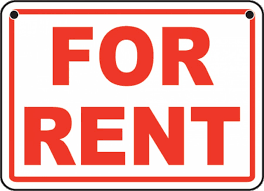May 10, 2023 | The Rental Crisis

I reported how BlackRock is now the largest landlord in the US. Institutions have purchased hundreds of billions in real estate across the nation and have no plans to sell because rentals are a lucrative venture. Inventory is at a historic low and people simply cannot find a place to live if they need to relocate. Rental price gouging has reached astronomical levels and demand far outweighs supply.
There are eight prospective renters for each available apartment in the US, and the average occupancy rate is 94.2%. Of those occupied leases, 60.7% chose to renew. New housing grew by a measly 0.43% as building costs have increased substantially. The high-density state of New Jersey has become the most competitive real estate market in the US. This is particularly true for the northern part of the state, which is no surprise as the average cost for rent in NYC is $5,186 monthly. That price tag makes places like Los Angeles look cheap, with an average rental price of $2,600. Miami, the new Wall Street of the south, has become the second most competitive market in the US. Apartments in Miami-Dade County last an average of 33 days on the market if a unit even becomes available.
Housing is completely unaffordable and people with good-paying jobs are struggling to find a place to live if they do not already own. Purchasing property was once the smart financial choice, but that is out of reach for the average person. In fact, over three million Americans earning over $150,000 annually still choose to rent as there is simply no alternative at this time.
Rentals across America are almost at total capacity. The typical person locks in a 12-month lease, but the landlord (in most states) can raise the price at the end of that term and there are little protections for residents. In fairness to the landlords, their costs have increased substantially as well in terms of taxes, insurance, and maintenance. The price of a renewal increase is typically lower than what it would cost to relocate, aiding in the decision for the majority to renew their leases.
Where I live, we also face seasonal rental price gauging. Off-season one-bedrooms in the Tampa Bay area are over $2,000 monthly and rising. But once the “snow birds” return during the winter months, prices increase substantially. There is a 13% tax here on short-term rentals as well, but finding a full 12-month lease is increasingly difficult.
Adding to this crisis is the mass influx of migrants as cities across the nation develop ways to house tens of thousands of people at the expense of taxpaying citizens. Landlords typically require renters to earn 3X the monthly rental price as well, forcing many to leave the cities and more desirable areas even if they earn a good living.
Shelter costs are unsustainably high for both buyers and renters. People cannot find a place to live. Those who rent often become stuck in a cycle of renting perpetually, unable to save as all their income goes toward shelter.
STAY INFORMED! Receive our Weekly Recap of thought provoking articles, podcasts, and radio delivered to your inbox for FREE! Sign up here for the HoweStreet.com Weekly Recap.
Martin Armstrong May 10th, 2023
Posted In: Armstrong Economics












